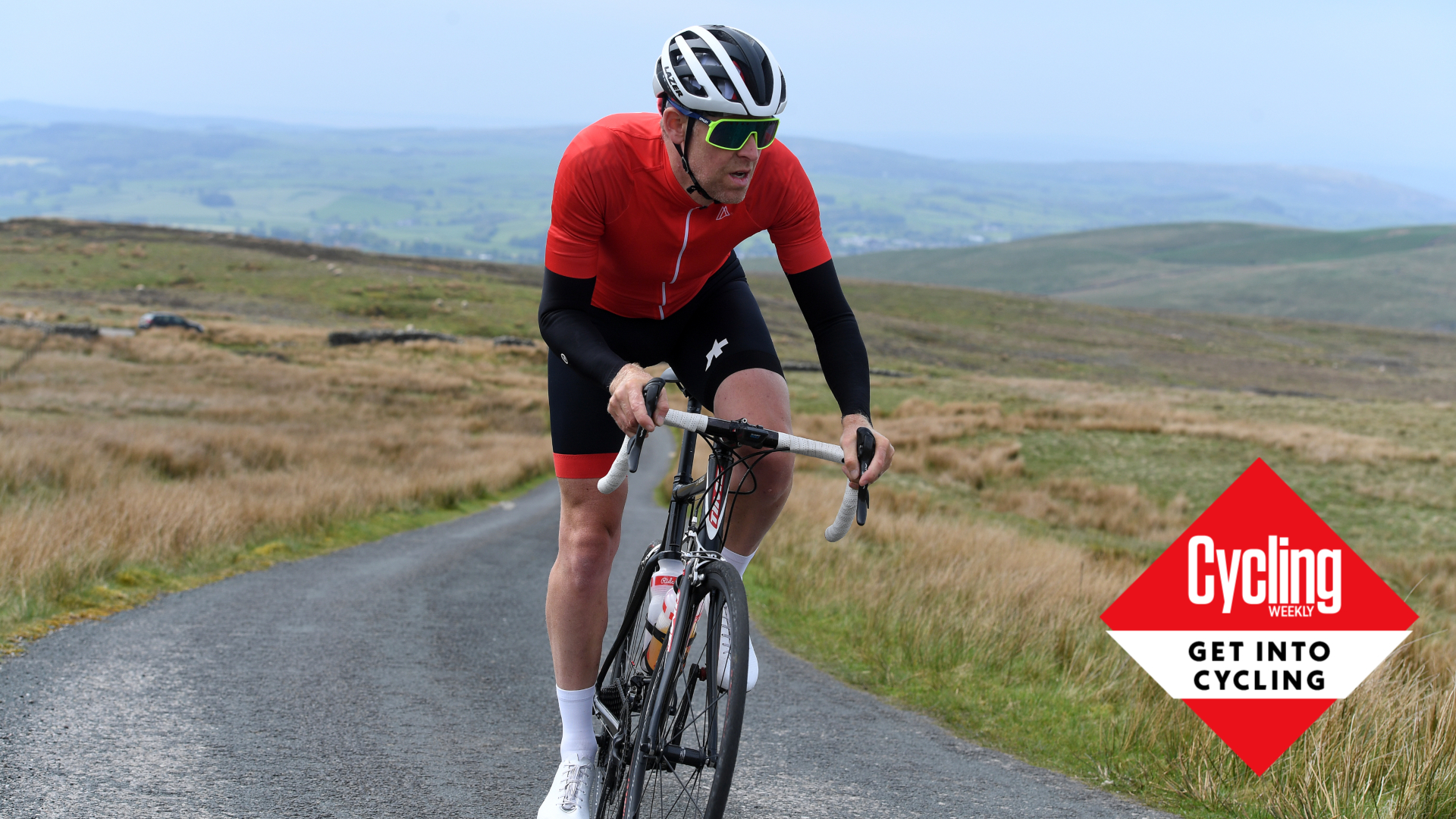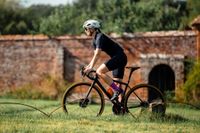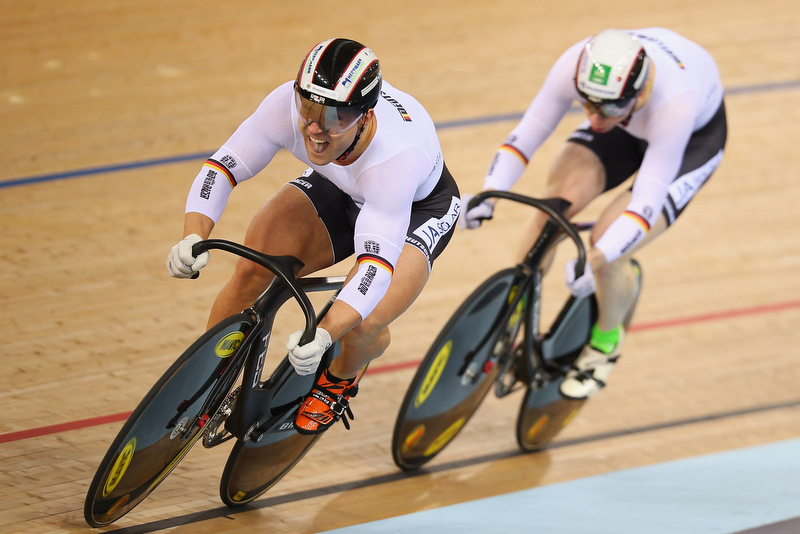'Will cycling change my body shape?' – you asked Google and we’ve got the answer
New to riding bikes and worried your new found pedal pushing habit will turn you into the incredible hulk? We've got the answers...


"Do you have problems getting jeans?" If you've ever been seen in lycra, this is a question you've likely had to bat down at some point. The answer is often no - but it can be hard not to look down at your quads when asked to see if they'd grown to Hoy-esque proportions overnight.
The question is understandable. Whilst cycling performance is about so much more than appearance, and athletic ability is never determined by aesthetics - since all body types are unique - our society does host somewhat of a fixation with appearance.
Case in point - if you begin to type 'will cycling' into Google, there's a plethora of aesthetically charged questions: will cycling give me big legs? Will cycling make me lose weight? Will cycling reduce fat?
If you're new to cycling, you probably want to know what it's going to do to your body shape - after all, as nutritionist to World Tour pros Will Girling puts it: "everyone wants to look good naked!"
Girling has worked with professional road, track and triathlon athletes, as well as amateurs seeking to optimise performance via nutrition whilst balancing busy lifestyles.
Common questions around cycling and body shape are typically split into two categories - leg growth, and weight loss - so we've addressed each with Girling's help.

Will I get big legs from cycling?
It's evident that cycling puts the leg muscles to work - but that doesn't necessarily mean you'll gain tree trunk pins from pedalling alone.
"It’s a leg dominant sport, so you can expect to see your legs gain definition, but training doesn't necessarily attribute itself to size in a huge magnitude. It depends on how you’re training," says Girling, who runs a coaching and nutrition company.
"Look at track cyclists, compared to road cyclists, the leg size is completely different. Top level Tour de France and WorldTour level cyclists are all very lean, typically have slimmer appendages, whereas track cyclists are stacked. That is obviously related to the kind of training that they do."
Track cyclists get their bulging muscles mostly from gym work, something some road riders still do, but usually favouring a focus on stability as opposed to lifting heavy weights for raw strength and power.
On the bike training plays a role, too: "Track cyclists will be doing hard efforts that will be sub one to four minutes, the energy system they're using and fibre type they require is one that is going to acquire more size. A bigger muscle can put out more power. But a more aerobic based muscle doesn't need power in the same sense, it needs more aerobic cells to be able to fuel the muscles for longer efforts."
If your goal is strength and power (and, yes, big legs) you'll need to hit the gym, and train like a sprinter. On the bike, things like hill sprints, where you find a hill and smash it up, or standing starts that involve sprinting from a slow speed, are great options for recruiting maximal muscle and adaptation.
If you seek a physique suited to endurance, you'll need to build up an aerobic base with plenty of long rides at relatively low intensity, to promote production of those aerobic cells and develop your cardiovascular fitness.
Regardless of your goal, a bit of gym work is a good idea for cyclists of any level.

"Form a 'pre-hab' [injury avoidance] perspective, cycling is very one dimensional, if you do already have muscular imbalances, strengths and weaknesses, they will be exacerbated by doing everything in a very linear format," Girling explains.
The latest race content, interviews, features, reviews and expert buying guides, direct to your inbox!
As an example, knee pain can be caused by the outside quad muscles - used heavily during the push phase of the pedal stroke - developing more quickly than those on the inside of the thigh.
Girling says strength work can be done at home if a gym isn't feasible, advocating exercises that are unilateral - things like split squats, single legged squats, lunges and anything that requires a change in direction, such as side lunges.
Though roadies tend to be adverse to creating shoulder bulk, he advises some upper body work, too - particularly any sort of exercise, like a bent over row, which pushes the shoulder blades together and helps correct the hunched posture we gain from hours over the handlebars.
Will I lose weight by cycling?
Cycling burns calories, so it would be fair to assume it will result in weight loss. However, the calorie equation is a simple formula based on two numbers - calories in versus out, and Girling says a lot of people get this balance wrong when they start exercising.
"You tend to see that when someone does exercise, their non-exercise activity goes down, and they tend to eat more on return.
"Ultimately if you want to lose weight, you need to look at your nutrition and be in a calorie deficit. But doing so without exercise will mean you lose muscle mass. If you want to lose weight as well as shape your muscles, look better and perform better, it's best to combine the two."
Reaching a calorie deficit is easier if you're tracking what goes in versus that which is burned through exercise.
"I would suggest tracking calories – looking at how much you're eating, making sure it's accurate, and over a month you can see if your weight has changed. If your weight goes up, you're obviously eating too much."
"People don't always realise the calorie content of some foods - things like flat whites, have two or three and you've had an extra 400 calories to your day, and then maybe during cooking you've had a tea spoon of cheese, and you’ve added another 100 calories. Apps that count calories give you an awareness of what you’re eating, and some allow you to scan a barcode now which speeds things up and makes it easy."
If you're training hard, you need to ensure you're getting enough fuel. Girling suggest periodising your nutrition alongside your training. That means eating more - particularly carbs - on days when you have intense sessions, and looking to create a deficit on rest days, where you'll keep the protein high to ensure those muscles get what they need.

Does natural body shape play a role in the effect cycling will have?
There is of course such a thing as a natural body type - the traditional big three are Ectomorphs, Endomorphs and Mesomorphs.
Ectomorphs are lean and often tall, and usually find it easy to lose weight. Endomorphs are larger, usually carrying more fat, and Mesomorphs typically gain muscle more easily.
In professional cycling, we're often seeing those already gifted in one direction, push themselves further that way, but there's no reason that amateurs can't also pick and chose their key pursuits based upon their genetic predisposition.
"There are exceptions to the rule, but Ectomorphs will lean towards to aerobic exercise and longer endurance based sports. Mesomorphs and Endomorphs cross over slightly, and will be more suited to strength and power sports." Girling says.
"The Mesomorph is someone who is just athletically built and will perform across the board. You will have them in cycling, some on the track, and some of the heavier Tour de France riders – maybe 80kg [male] riders who are amazing time triallists or can sit on the front and push the pace."

Thank you for reading 20 articles this month* Join now for unlimited access
Enjoy your first month for just £1 / $1 / €1
*Read 5 free articles per month without a subscription

Join now for unlimited access
Try first month for just £1 / $1 / €1
Michelle Arthurs-Brennan the Editor of Cycling Weekly website. An NCTJ qualified traditional journalist by trade, Michelle began her career working for local newspapers. She's worked within the cycling industry since 2012, and joined the Cycling Weekly team in 2017, having previously been Editor at Total Women's Cycling. Prior to welcoming her first daughter in 2022, Michelle raced on the road, track, and in time trials, and still rides as much as she can - albeit a fair proportion indoors, for now.
Michelle is on maternity leave from April 2025 until spring 2026.
